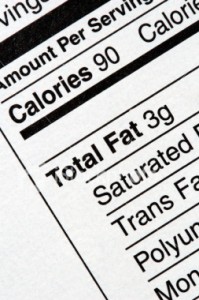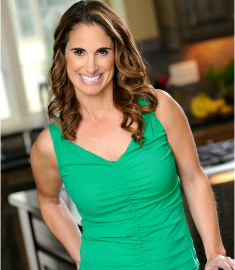How many times do you read the nutrition labels on the food products you purchase? More often than not, it’s a rare occasion. So many of us simply choose foods that we are familiar with, are craving, or that look good from the picture on the front packaging and neglect the most important part—the nutrition facts on the back. This label of percentages and numbers serves to inform you of exactly what it is you’re eating and because the labels are standardized you can use these nutrition facts to compare similar products and make better food choices. That’s why it should be a priority to view them, especially if you’re trying to stick to a specific diet regimen, or cut back on a particular nutrient such as salt or saturated fat. To put it bluntly, there’s simply no better way to determine or calculate your needs than to look at the nutrition facts label.
WHAT TO LOOK FOR
When looking at nutrition fact labels on any product it is always good to first look at the serving size and the number of servings for the entire package. These are the most important factors because all other percentages and numbers are based off of these two. The next area to look at should be the total calories. Evaluating this area can help y ou to manage your intake and weight by allowing you to keep track of your total caloric intake throughout a meal or series of meals. A general guide for classifying whether a food is “high-calorie” or “low-calorie” is to think of food items of 100 calories or less as “low-calorie”, a food item of 100-400 as “moderate” and a food item of greater than 400 calories to be “high-calorie”. It is also a good idea to look at the daily percentages and amounts of other nutrients such as vitamins, minerals, and fiber. A good way to determine whether an item is high or low in a particular nutrient such as these is to remember that anything 20% or more of the daily value (DV) is “high” and anything 5% or less of the DV is “low”.
ou to manage your intake and weight by allowing you to keep track of your total caloric intake throughout a meal or series of meals. A general guide for classifying whether a food is “high-calorie” or “low-calorie” is to think of food items of 100 calories or less as “low-calorie”, a food item of 100-400 as “moderate” and a food item of greater than 400 calories to be “high-calorie”. It is also a good idea to look at the daily percentages and amounts of other nutrients such as vitamins, minerals, and fiber. A good way to determine whether an item is high or low in a particular nutrient such as these is to remember that anything 20% or more of the daily value (DV) is “high” and anything 5% or less of the DV is “low”.
INGREDIENT LIST
Aside from the nutrition facts alone, you should also look at the ingredient list on food items you purchase to determine what individual ingredients make up the product. Remember, the ingredients are listed in order of which is present in the highest amount. So if something like sugar or high fructose corn syrup is the first or second ingredient list, you know that this product has a larger quantity of those ingredients compared to others found further down. Another general guide to help you make healthier choices when it comes to the ingredient list is to always try to choose foods with shorter lists with ingredients you recognize. If the product has more than 10, of which only 2 or 3 you can pronounce or are familiar with, chances are it may not be the healthiest choice.
Research assistance provided by Robert Masterson.







great tips! It was brought up on another blog how serving sizes could be standardized to make it easier for consumers to make easier comparisons between foods. I thought this was an interesting point. Many cereals for example have different serving sizes to base the nutrients off of, so while one cereal may look ‘better’, the serving size is different and this can be confusing for those who are comparing the nutritional quality of some foods. I’m actually looking forward to how they will revise the labels and hopefully make them easier for consumers 🙂